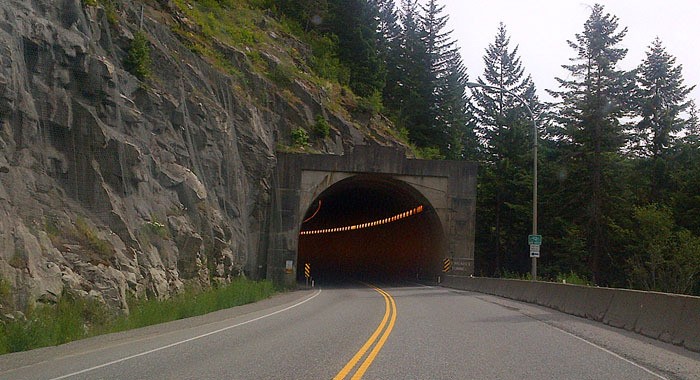VICTORIA – “Fast is the new slow,” declared one Toronto newspaper’s front page when the B.C. government announced it is increasing speed limits around the province.
The headline picked up on Transportation Minister Todd Stone’s justification for raising limits on 35 stretches of rural B.C. highway. Stone referred to traffic studies that show portions of the highway system where the vast majority of drivers already travel at the new speeds.
Stone emphasized that accident risk is not so much a function of speed, but of differences in speed between vehicles. That’s why the signs going up this summer will include a new warning for left lane hogs: “Keep Right – Let Others Pass.”
For the first time, there is a 120 km/h limit on three segments of rural divided highway, parts of the Coquihalla, the Okanagan Connector and a stretch between Parksville and Campbell River on Vancouver Island.
Having regularly driven up and down the B.C. Interior highway system for the past 30 years, I can confirm that particularly once you get “beyond Hope,” drivers do set the speed limit. In good conditions, it’s generally about 10 km over the posted maximum, particularly in the long spaces between communities where resources to do regular speed enforcement simply don’t exist.
Improvements in the road system, and the modern vehicles that drive it, have been enormous.
My last trip was in June, up the Fraser Canyon and on through the Cariboo to Prince George. The canyon offers some of the harshest road-building conditions in Canada, but even portions of that cliff-hanging, rock-and-tunnel road are getting increases from 90 to 100 km/h.
There are two common assumptions about this move. One is that increasing the speed limit means people will automatically drive faster. The other is that higher speeds mean more accidents, or at least more severe accidents.
The government downplayed opposition to this change, which Stone signalled last fall when he launched the public consultation.
Police agencies don’t like it. ICBC officials are skeptical to say the least. ICBC’s latest rate increase was attributed mostly to cost pressure from higher injury payouts, and it will be tracking the sections of higher speed limit to see if the number of severe accidents goes up.
Speed wasn’t singled out when interim ICBC boss Mark Blucher made the case for an increase of nearly 5% on basic insurance last fall. One reason why claims for bodily injury, pain and suffering, future care and loss of earnings are going up is that more people are hiring lawyers.
Another reason is distraction, not just from mobile devices but also more pedestrians and cyclists in urban areas.
Are drivers getting worse? A recent report out of Saskatchewan suggests they are.
In 2013, only 48% of new drivers in Saskatchewan passed their road test. The test hasn’t changed much in the past decade, and there are more immigrants who aren’t accustomed to highway driving, North America style.
But a veteran driving instructor calls today’s new drivers “the weakest generation I’ve ever taught,” after they spent their formative passenger years watching TV or playing with game machines and other screens while on the road.
“The awareness level isn’t where it was when I started 15 years ago,” Margot Podiluk told the Saskatoon Star-Phoenix. “Today’s generation, they’re so connected to electronic devices they don’t look out of car windows.”
If raising speed limits is a mistake, accident statistics will soon tell the tale. My expectation is that on rural highways, speed limits are just catching up to the traffic.
Tom Fletcher is legislature reporter and columnist for Black Press. Twitter: @tomfletcherbc
